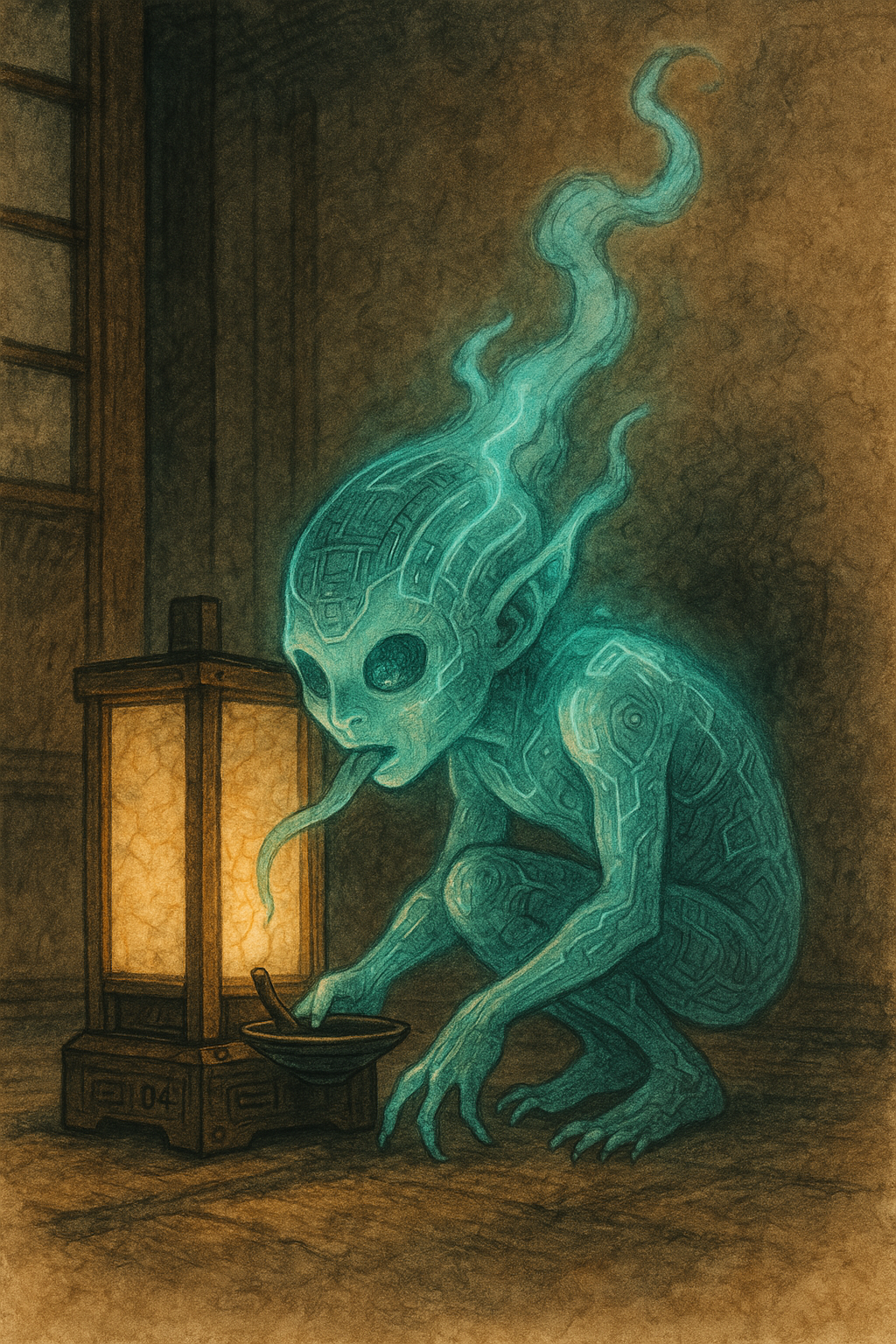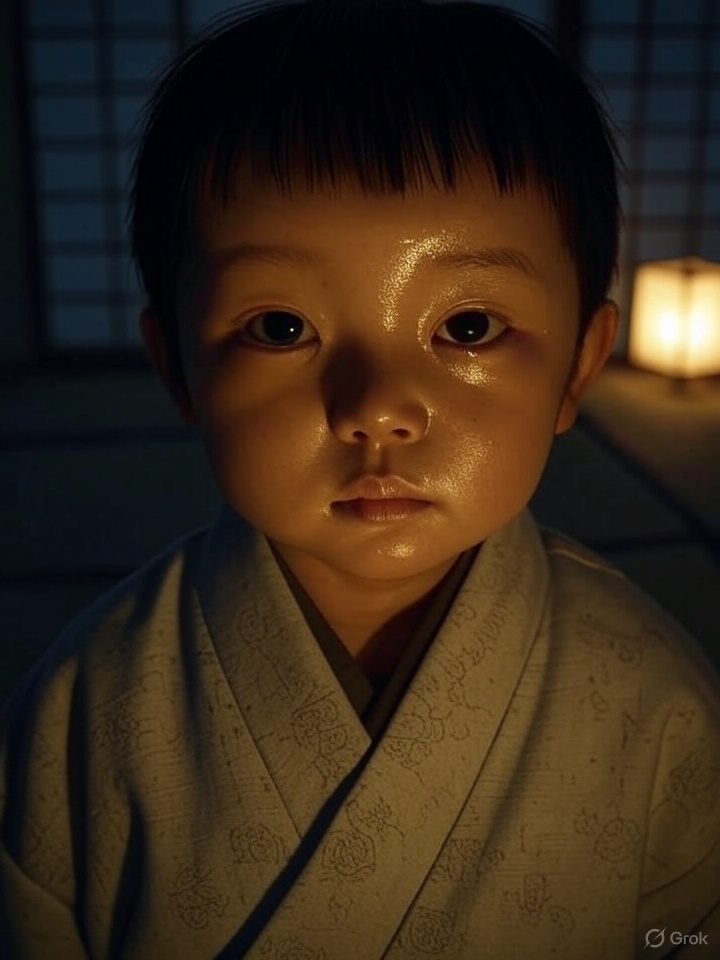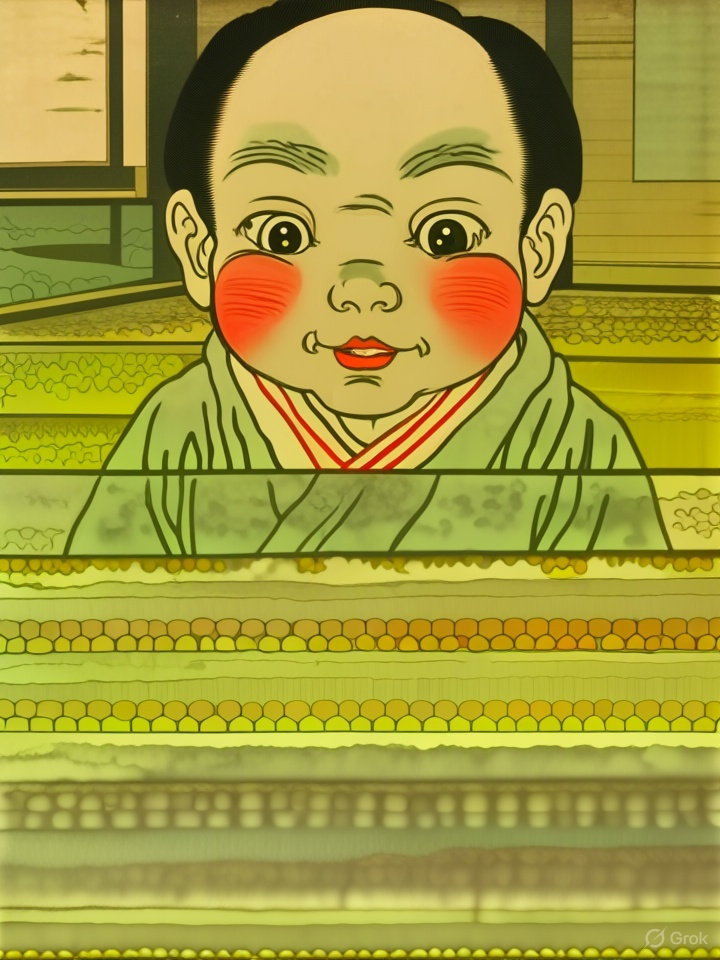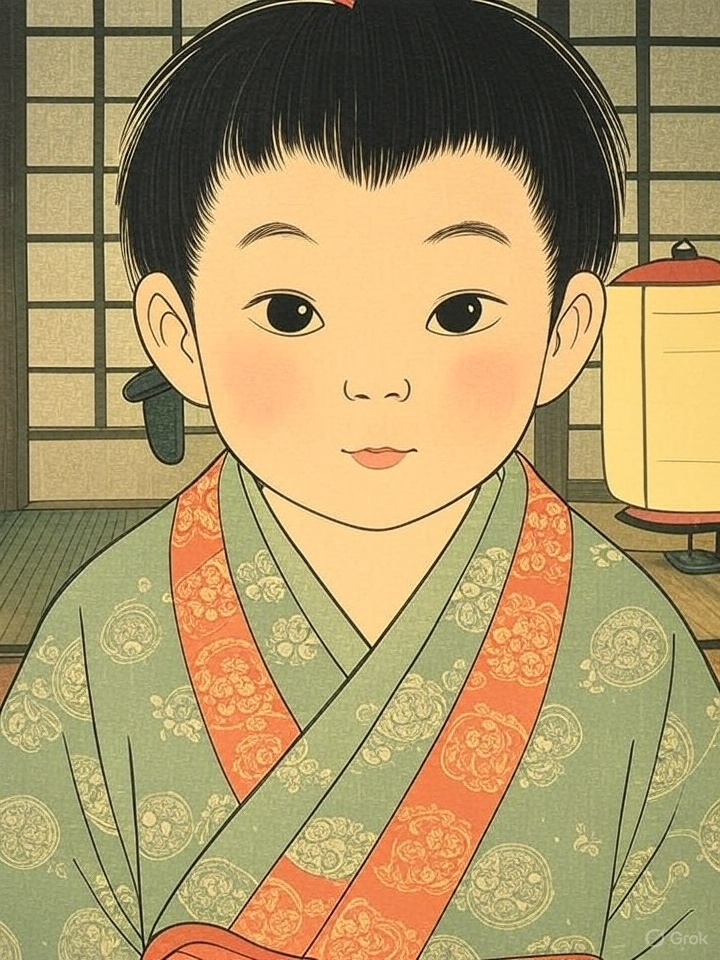Origin & Mythology
Overview
\n
Abura-akago is described as the ghost or spirit of an infant that appears at night, often seen licking the oil from traditional andon lamps (paper-covered oil lanterns used in Edo-period Japan).
This yōkai is believed to have originated from the spirit of someone who stole oil—a highly valuable commodity in the past—or from a soul that is deeply gluttonous or greedy, reborn in this ghostly infantile form.
Appearance
- Takes the form of a red-faced baby or infant ghost.
- Sometimes appears glowing faintly or with an ethereal aura.
- Moves by crawling or floating silently into homes at night.
Behavior
- Slips into homes under cover of darkness.
- Drinks the lamp oil, which traditionally came from fish (like sardines or whales), or sesame oil—considered precious.
- Known to be mischievous rather than malicious, but the act of consuming oil symbolizes wastefulness or punishment for greed.
Symbolism
- Greed: A reminder of the karmic consequences of theft or gluttony.
- Waste: Reflects how something as small as a ghost baby could quietly drain precious resources.
- Supernatural Retribution: In some variations, Abura-akago is the vengeful spirit of a child who died due to neglect.
Cultural Appearances
- Featured in Toriyama Sekien’s Konjaku Gazu Zoku Hyakki (続百鬼) in the 18th century, a famous collection of yōkai illustrations.
- Sometimes conflated with other spirits like Abura-nusumi-no-rei (spirit of an oil thief).




